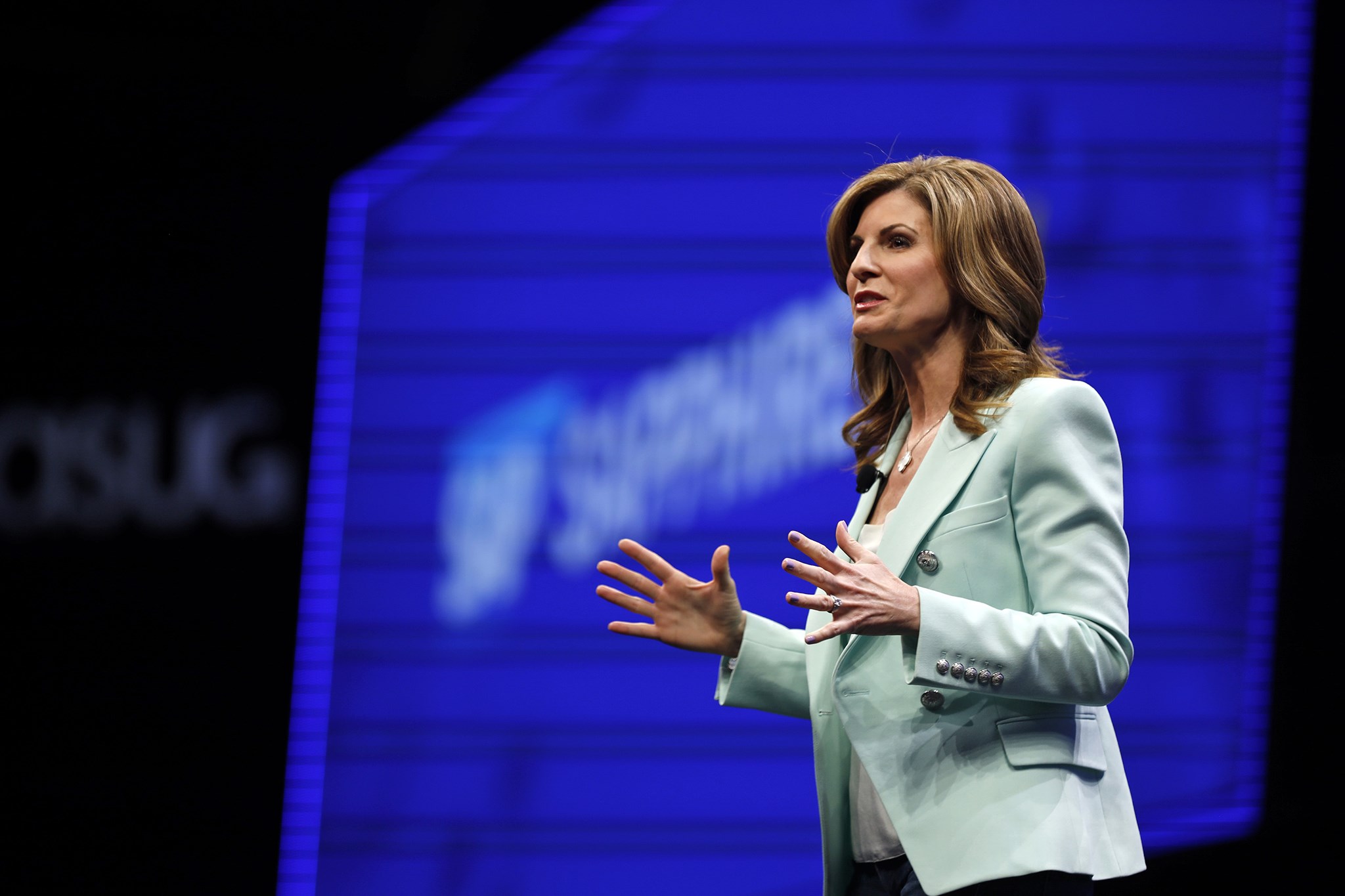 CLOUD
CLOUD
 CLOUD
CLOUD
 CLOUD
CLOUD
Growth in new cloud bookings for SAP SE fell sharply in the fourth quarter of 2019, triggering a selloff in the enterprise software maker’s shares despite better-than-expected overall results and a higher full-year forecast for 2020.
New cloud bookings grew 17% on a constant currency basis in the fourth quarter, down from 39% growth the previous quarter. What’s more, SAP attributed 10% of that growth to a single unnamed customer that migrated from an on-premises installation to the cloud.
The company also blamed the unexpected decline in part on its recent decision to abandon the infrastructure-as-a-service business in favor of a reliance on partnerships with hyperscale providers. “In 2019 we made the decision to focus on our [software-as-a-service] business and away from infrastructure,” said co-Chief Executive Jennifer Morgan (pictured). “That was a strategic decision that had an impact on top-line revenue.” Chief Financial Officer Luca Mucic called the slowdown “a small seasonality blip.”
In early trading on the New York Stock Exchange, SAP shares were off about 3.5% despite a swing back up for the overall market after Monday’s coronavirus-driven downdraft.
Cloud revenues grew a healthy 32% overall, although that figure was down from 37% the previous quarter. Software license revenue was down 6%, continuing a pattern of slow decline that’s lasted for the past several quarters.
SAP said it expects adjusted cloud revenues of between €8.7 billion and €9 billion ($9.57 billion to $9.9 billion) in 2020, up between 24% and 28% at constant currencies but down from 35% growth in 2019. It said total revenue is expected to be between €29.2 billion and €29.7 billion ($32.12 billion to $32.67 billion), up 6% to 8% and down slightly from the 9% growth rate in 2019.
“Regardless of this quarter’s results, we continue to hear support from SAP’s customers,” said Trevor White, an analyst at Nucleus Research Inc. “We expect SAP to continue to do well over the long term in the market segments where it traditionally competes.”
The decline in the stock price came despite the company’s revised forecast that operating profits in 2020 will come in at between €8.9 billion and €9.3 billion ($9.79 billion to $10.23 billion), up from its earlier forecast of €8.8 billion to €9.1 billion ($9.68 billion to $10.01 billion). “Our on-premises business continues to grow; our cloud business continues to soar,” said co-CEO Christian Klein.
The fundamentals of the core business enterprise resource planning still look strong, analysts said. SAP added 1,200 customers of its S/4HANA next-generation ERP suite in the quarter, bringing the total installed base to 13,800. In a statement apparently aimed at critics who have said many S/4HANA customers have bought but aren’t using the software, the company said 65% of licensed HANA customers are currently live or migrating to the platform.
Executives also said S/4HANA is more than just an installed-base play. “Forty percent of HANA customers are net new,” Klein said. “Most are midsized companies, but we’ve also seen a notable number of large enterprises with no previous SAP presence implement HANA.”
SAP has left existing customers little choice, however, having set a deadline of 2025 for users of its legacy ERP platforms to move to S/4HANA. That deadline was set under the leadership of previous CEO Bill McDermott, however. Asked if there are any plans to change it, Klein left the door ajar.
“SAP in the past has left no customer behind and you can expect a communication very soon where we give more clarity around this topic,” he said.
Nucleus Research’s White said the deadline appears to have had little impact on customer defections. “Any time there’s a transition there’s a risk customers may choose another path,” he said. “However, the ROI from cloud services is clear. Moving ERP from on-prem to cloud is a grind, but it’s a grind for everyone, not just SAP customers.”
Executives continued to laud the performance of Qualtrics Inc., the customer experience management software vendor SAP acquired for $8 billion in 2018. Qualtrics’ technology is being combined with SAP’s human capital management and customer experience products and positioned as an entry point for new customers.
Noting that most SAP customers are not currently using Qualtrics, Morgan said the acquired company “continues to successfully drive a land-and-expand strategy” and ticked over 11,500 customers in the quarter. The number of Qualtrics deals larger than $1 million grew 60% in the quarter, Morgan said.
The acquired company anchors a broad overall initiative by SAP to diversify beyond its ERP base into customer experience, human resources and expense management, three segments that the company collectively calls “experience management.” Of the three, SAP only breaks out revenues for the expense management segment, which grew 12% in the quarter to €830 million ($913 million).
“SAP does well when the customer is already part of SAP’s ecosystem,” White said. Its new lines of business are in areas “where the competition is particularly aggressive and SAP cannot become complacent, particularly as traditional mid-market vendors start competing for smaller-level enterprise customers.”
Support our mission to keep content open and free by engaging with theCUBE community. Join theCUBE’s Alumni Trust Network, where technology leaders connect, share intelligence and create opportunities.
Founded by tech visionaries John Furrier and Dave Vellante, SiliconANGLE Media has built a dynamic ecosystem of industry-leading digital media brands that reach 15+ million elite tech professionals. Our new proprietary theCUBE AI Video Cloud is breaking ground in audience interaction, leveraging theCUBEai.com neural network to help technology companies make data-driven decisions and stay at the forefront of industry conversations.